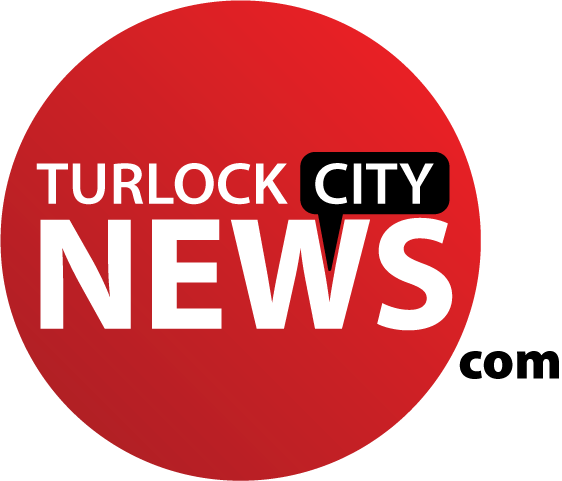The average Turlock family's monthly water bill could rise from $19 to $96.25 by 2023, according to a presentation delivered to the Turlock City Council on Tuesday.
Even using a low-end estimate, the average family's water rates must increase to $41.75 per month by 2023 to cover the minimum costs of providing service, said Tom Pavletic, owner of Municipal Financial Services, who gave the report.
“We don't want to sugar-coat it,” Pavletic said. “The impact will be significant, on all users.”
Surface Water vs. Groundwater
The report lays out the potential water rates Turlockers would need to pay in two different scenarios. Turlock could either continue with the current groundwater system, which sees the city pump all drinking water from an aquifer, or build a long-discussed surface water treatment plant.
The main difference is obvious to ratepayers: cost.
“Surface water is more expensive, to the tune of tens of millions of dollars,” Pavletic said.
The surface water option would see Turlock partner with Ceres and South Modesto to treat Turlock Irrigation District-owned Tuolume River water. Turlock's portion of the plant would cost nearly $100 million to construct, plus an additional $2.5 million in annual operation costs.
If Turlock proceeds with the plant, Turlockers would see a 150 percent water rate increase above the costs of using groundwater – to the aforementioned $96.25 per month figure for the average household.
But building a surface water treatment plant would guarantee Turlock's water future. The city would have a dedicated source of water, able to serve residents and businesses alike, regardless of what actions the state and federal government may take.
Though cheaper now, groundwater has myriad issues surrounding it – leading to potentially significant long-term costs.
“The groundwater in our area is a diminishing resource,” said Michael Cooke, new Turlock Municipal Services Director. “Pumping is exceeding that resource, and that's leading to a general decline in groundwater levels.”
East side farmers have been pumping hundreds of thousands of acre-feet of water each year to feed newly planted orchards. That pumping has caused a so-called “cone of depression,” which lowers Turlock's groundwater levels as water drains to the low point on the east side.
“Now that the farmers on the east side are pumping all our wells dry, there's no water in our aquifer,” said Turlock Mayor John Lazar.
Turlock has shuttered two wells in the past three years due to declining water quality, directly linked to the falling groundwater level. Two more wells are nearing the state limit for arsenic levels, and may soon need to be closed.
Turlock could opt to treat groundwater at the wellhead to extend the system's life, but that has costs associated, too. And even if the water is treated, levels will continue to fall as farmers pump more and more.
That means groundwater comes with increased costs, too. The average Turlock household would pay more than double current water rates by 2023 – the $41.75 per month figure – assuming a best-case scenario.
Under either scenario, the average family would see rates rise from $19 to $27 per month starting in 2014.
Present vs. Future
Ultimately, the decision to adopt surface water or stick with groundwater comes down to a not-so-simple question: should the city plan for the future at the expense of residents' pocketbooks, or save Turlockers money now while potentially costing them much more later?
The debate is nothing new to the region, Pavletic said. The Fresno City Council agreed to double rates earlier this month, as the need for surface water was simply unavoidable.
Turlock City Councilwoman Amy Bublak had concerns with the surface water plan, noting that the true costs of the plant remain uncertain. And Turlock could move forward with the plan only to see a partner city drop out, leading to an even more dramatic surge in rates as Turlockers pick up the slack, she said.
“If we don't know what the costs are upfront with the (plant), we shouldn't be trying to ascertain how we're going to get there,” Bublak said. “… We're really putting the cart before the horse here.”
Councilman Forrest White, who sits on the group working to build the plant, said that the time to build is now. Costs will only go up, and water will become more in-demand, White said, making a treatment plant less feasible in the future. Turlock could be looking at $200 monthly water rates if it waits, he said.
If Turlock does not proceed, White pondered that future councilmembers might say, “What the hell were they thinking not to do surface water?”
“Are we going to spend money for Turlock's future, not to make us look good today?” White asked. “… We've got to look at our children, and will they have water.”
Need for Solution Imminent
Regardless of the final solution – which may not be either option presented Tuesday – water rates are likely to rise. City water revenues have fallen from nearly $9 million per year in 2011, before metered rates were introduced, to only $7 million today. Turlock used $560,000 from reserves to cover the shortfall last year.
“We do think there is a critical need, that we are expending more in the water fund than is coming in in revenue,” City Manager Roy Wasden said.
The new system presented by Pavletic wouldn't just increase rates – it would change the way rates are paid, as well.
Today, Turlockers pay less for each gallon of water they use, a relic of the industrial basis of the current rate structure. And nearly 70 percent of users' monthly bill is directly attributable to their usage.
The new system would see users pay a flat rate for each gallon used, with different flat rates for residential, commercial, and landscaping users. Additionally, the percentages would flip – about 70 percent of a users bill would be fixed based on connection size and customer charge, with the remainder based on usage – creating more rate stability for Turlock.
Turlock will continue to study the issue in the coming weeks, potentially holding meetings with key water users to discuss the impacts of a rate change.
“It's a critical issue for Turlock, and we'll ponder it for a few weeks and month,” Lazar said.
But a time will come when Turlock will be forced to plan for its long-term water future, White said, despite the costs.
“We only know the worth of water when the well is dry,” White said.







